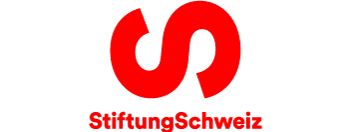Participation entails actively integrating employees into the decision-making process, be it in team meetings, with surveys, via involvement in projects or through topic-focused workshops. Alongside obtaining multiple perspectives and promoting innovation, the aim is to turn employees from people who simply carry out tasks into people who are actively involved.
Participatory processes go hand-in-hand with organisational development. After all, discussing topics of relevance to a company represents change in the desired direction. These processes help raise awareness. Exploring a specific topic attracts people’s attention to it – and things that are being monitored tend to undergo change. In times marked by holacracy and sociocracy, flat hierarchies and agility, scrum, kanban and lean management, the principle of participation is no longer rocket science. Or so you might think. But while this seems crystal-clear in theory, in practice, it’s about jointly finding out which model works best for your own organisation. Hierarchical organisations are working on motivating their employees to be more entrepreneurial and take more responsibility. Companies with flatter structures, conversely, are often engaged with defining clear responsibilities and decision-making processes. Both are pursuing the same goal: establishing effective, sustainable work processes that move the company forward.
A new design
If an organisation is managed in the traditional manner, introducing participatory approaches first calls for a new design to be developed: employees need to understand why it’s necessary for each and every one of them to get involved. This behavioural shift towards active employees requires management, the company’s learning culture and even, potentially, its existing structures to undergo a simultaneous shift. A change of this nature can succeed if managers are honestly interested in new ideas and are open towards the process. Innovation is possible when participation isn’t about paying lip service, when it isn’t just about confirming pre-existing, pre-conceived opinions. If the process can be initiated in a targeted yet open-minded way, there is scope to jointly develop measures that have a real impact and get the whole organisation moving.
Risks of being personally overstretched
The challenge often takes on a different guise at strongly value-driven organisations, such as NGOs, foundations and social enterprises. Here, employees are usually intrinsically motivated and actively get involved. They’re passionate about a cause – until this passion consumes them. They give their all, and more, for the shared mission, doing their bit, engaging in discussions, until people lose sight of who’s responsible for what. Decisions are deferred time and again to get as many people on board as possible. If a decision is made nonetheless, the outcome can be questioned vehemently by an individual person – and that’s enough to leave things on shaky ground again. The result: the process gets stuck and the organisation has lost its ability to make decisions. Highly motivated employees get more and more frustrated, and people who started off on the same page end up poles apart. This often gives rise to informal structures of power: an organisation with flat hierarchies turns into an organisation with a small number of decision-makers.
Defining clear roles
The major challenge lies in clarifying how decisions are made and how people ascertain who bears responsibility for what. How can multiple perspectives be used to reach a consensus in a reasonable period of time, even if not everyone agrees? The principle of consent, for instance, is one option. Under this approach, the final decision is made by an expert. Collaboration is based on trust – and that’s the same across every organisation. So, before you start a process, it’s worth setting out rules for this collaboration. After all, differences of opinion are simply a matter of course. In fact, you could say that that’s exactly what it’s all about: you want different perspectives to be included, but you do need binding rules for this.
Firstly, having a clear goal is key. Then, you can draw on this goal to derive clear tasks and roles, not to mention the associated expectations. After all, this will serve as a guide for all those involved. Secondly, a constructive culture of error tolerance enables people to express themselves critically. Participants should be able to trust that they can share their views openly, without any worries or fear of adverse consequences. Thirdly, careful, timely and transparent planning when it comes to communicating the core team’s updates is critical. If other people in the project are unable to understand why a particular decision was made because they were left out of communication, this leads to a good deal of uncertainty and great potential for frustration. Companies who want everyone involved to think and act independently should ensure that responsibilities, skills and the decision-making process are clear, transparent and reviewed on an ongoing basis. Ideally via a participatory process.


